Tie Guan Yin is one of the most interesting takes on oolong ever developed. Despite its ancient-sounding name—invoking the Bodhisattva of Compassion, Guan Yin— the “Iron Goddess of Mercy” only dates back to the 19th century. Hailing from Anxi county, in Fujian province, China, this complicated style of oolong originally began its life as a medium-roast, “strip leaf”-shaped incarnation; similar to Wuyi Mountain yanchas, or Phoenix Mountain Dan Congs—only nowhere near as dark. That changed around the turn of the 20th century when the processing techniques grew even more labyrinthine.
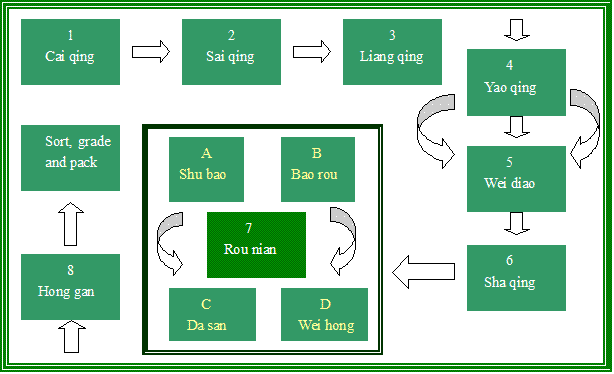
Contrary to popular belief, though, Tie Guan Yin didn’t start out as a processing style of oolong. Rather, the style was inspired by a slow-growing, low-yielding cultivar of the same name.
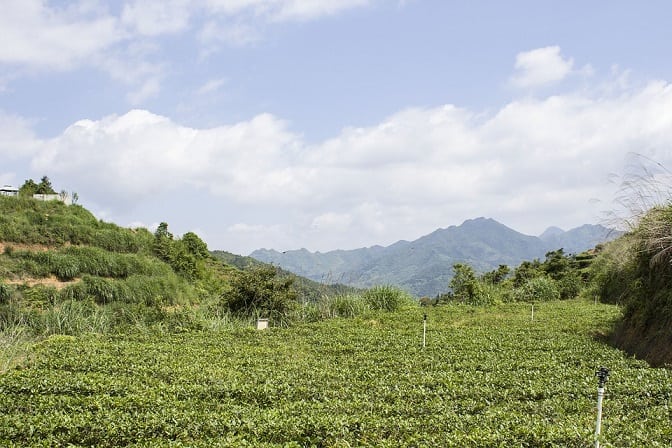
Granted, there are Chinese Tie Guan Yin-style oolongs on the market made from different, single cultivars, or blends of various, but true Tie Guan Yin is made from the cultivated tea tree variety of the same name. It was specifically bred for the deep, fruity-floral aromatics that are the cornerstones of Tie Guan Yin.
But it didn’t stay in China for long.
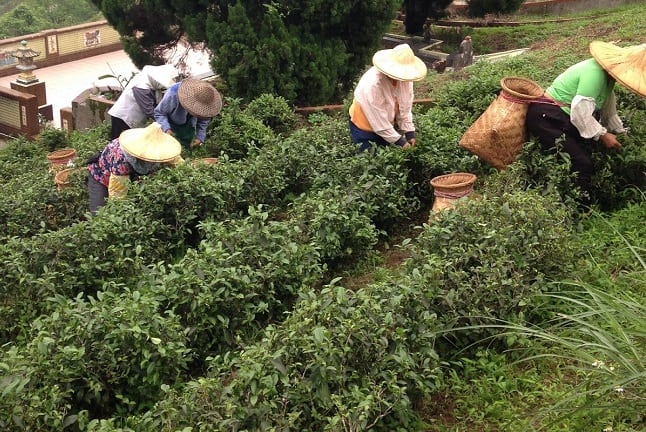
I wasn’t able to find much online (in English) that conclusively stated when the cultivar made its way to Taiwan. As it turns out, though, the most information I found was on the blog of the very vendor who first introduced me to Taiwanese Tie Guan Yin; Shiuwen Tai of Floating Leaves Tea. According to her, two brothers—with the surname of Zhan—journeyed to Anxi county and brought back a Tie Guan Yin bush to their home. They hailed from a district in Taipei once known as Muzha (now incorporated as Wenshan).
The temperamental li’l tea bush thrived in the region. 140 years later, farmers in former-Muzha still produce near-traditional Tie Guan Yins. Shiuwen Tai personally sources her Muzha Tie Guan Yin from a man claiming to be of the original Zhan lineage.

In the years that I’ve known her, I’ve tried various seasonal plucks of the Muzha stuff, thinking that the Tie Guan Yin cultivar remained nestled in that region. But then I saw an Instagram Live video she posted a few months back. She does great live videos.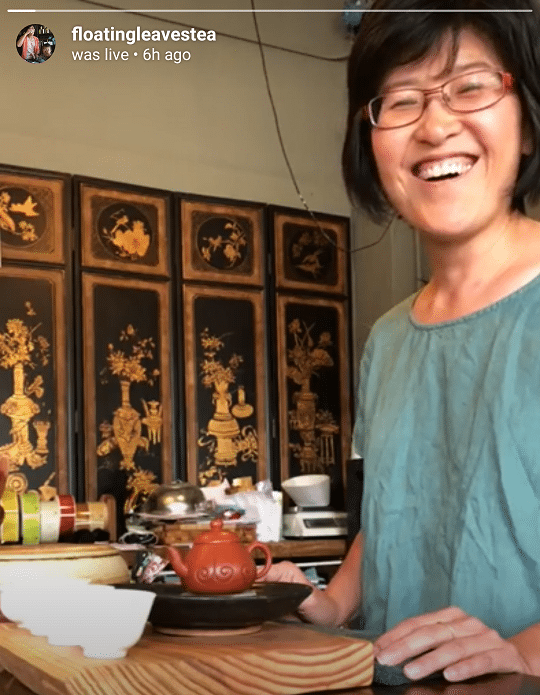
During that session, she did a side-by-side pairing of two oolongs made from the Tie Guan Yin cultivar, but with one difference. Neither were from Muzha; these two hailed from high mountain regions in Taiwan, specifically Li Shan and Ali Shan. That . . . blew my mind.
The following week, I made contact with her to see if I could acquire a bit of each, and some Muzha-made stuff to use as a primer. She graciously dispatched some, and I got to it . . . rather late. Eh, better late than never, I say.
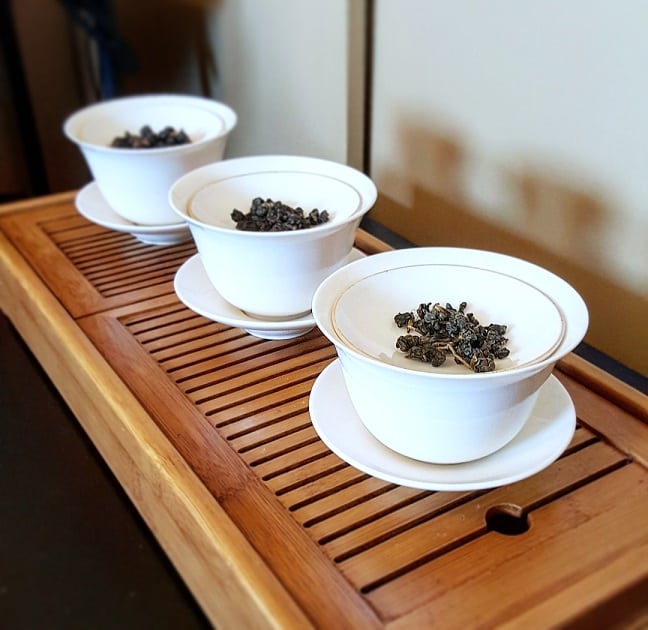
So as to not kill myself during this triple-flight of oolongs, I decided to approach them the same way. One infusion at a longer steep time (thirty seconds), same “close-to-a-boil” water temp. I’d let them cool a bit, and then I’d dive in. After that, I’d steep them out gleefully while I still possessed the mental lucidity to do so. Taiwanese oolongs did funny things to my brain, particularly gaoshans (i.e. the high mountain stuff).

These beautiful ball-rolled leaves displayed colors ranging from beige to cinnamon brown. That cinnamon lean also came through in the aroma, which alternated between toasty, sweet, slightly . . . well . . . cinnamon-y. All aromatic traits I’d expect in an oolong given a slightly darker roast. However, the whole experience was even-handed, not too much of an impression of “burning”.

The liquor brewed up to a soft, light amber. Not quite gold, not quite yellow. Regardless of the roast, I came out rather light on the first infusion. The accompanying steam aroma was equally soft. On first sip, the toasty “pillow” that passed for its flavor entered my body in a sweet, nuanced song. Following the comfy, electric pillow intro, my palate was greeted with a creamy, almost nugetine top note, and it all finished a little nutty—literally and figuratively.
And the leaves weren’t even fully opened, yet!
These dark green leaves smelled like candy, specifically some sort of caramelized truffle. One would think this was a bug-bitten oolong on first smell; heck, it even reminded me of a bug-bitten Dong Ding-grown Jin Xuan. The candy-like aspects in the fragrance dissipated to reveal its high mountain florality.
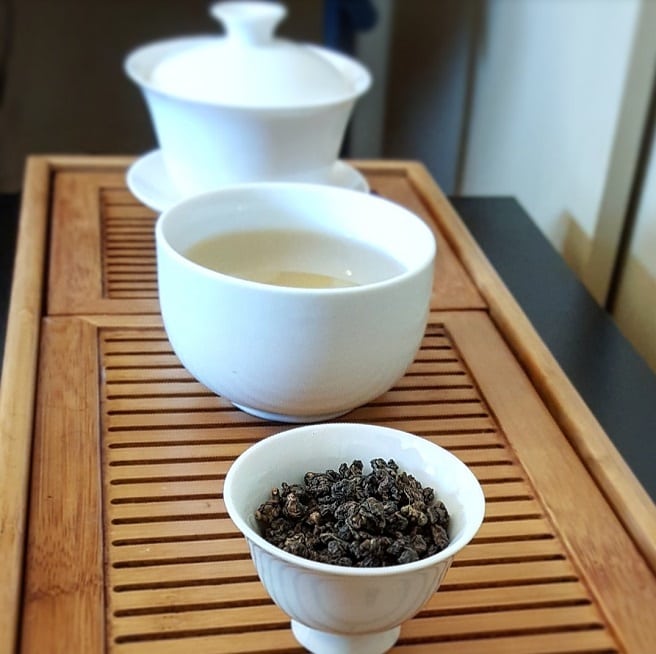
The liquor brewed to a soft yellow, bordering gold, but not quite reaching that level of sparkle. That said, it was still a very spritely looking brew. All the high mountain-ness could be sniffed in the cup. This tasted every bit like any other Li Shan, save for the extra dose of sweetness. An added creamy layer was also something new. The finish was all cotton candy clouds and naked Buddhas.
(Mid-Point Blogger’s Note: I was starting to feel really fuzzy. Not illucid; just fuzzy. Like a Cheschire-like spirit cat found my brain to be a cozy lap to sleep in.)
Mr. Lai’s Tie Guan Yin (Ali Shan)
This was the greenest of the three oolongs, betraying its very minimal roast. Many of the aromatic notes found in the Li Shan also made their way to this one. An undeniable sweetness, if not as robust, was present on the intro-whiff, whereas notes of cream and chrysanthemum took up the rest of the scent.
Confession time: I probably steeped this a little too long—by a good fifteen seconds. My eyes were still a little glazed over from the prior brew-up. Luckily, that didn’t deter the flavor delivery at all; quite the opposite.
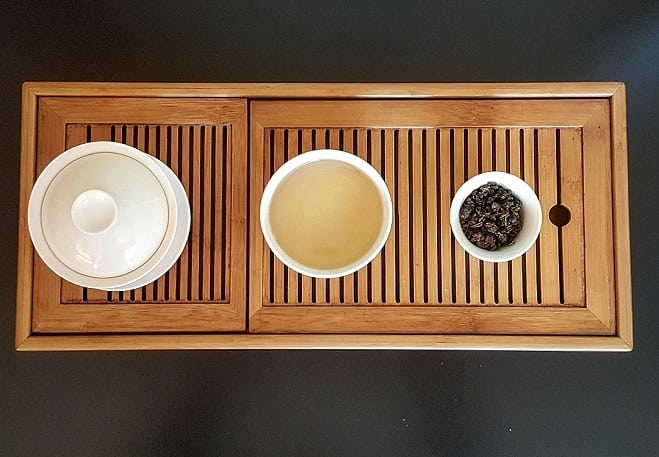
The liquor colored about the same, if not a little deeper than the Li Shan—more on the gold end of the spectrum. Sweetness escaped the cup like a flock-herd of candy-colored pegasi. Also like the Li Shan, it delivered dollops of berry and honey sweetness, along with a flower-cream underpinning. In the latter regard, it was very on par with other Ali Shans, but—as expressed earlier—that sweetness!!!
Final thoughts?
When subjected to the traditional Tie Guan Yin processing treatment, the cultivar takes on the usual, layered notes of the oolong type. Meaning, the Muzha tasted quite a bit like an Anxi, save for a more resonant Taiwanese bend to the roasted note. When subjected to a higher mountain approach, the cultivar’s natural fruitiness shined through. However, a roasting was still necessary to bring out a more layered body to the brew. The Li Shan was obviously roasted longer (or more times) than the Ali Shan, and therefore had the benefit of a deeper palatial experience overall. While the floral-fruity notes were wonderful in the Ali Shan, it was—for good or ill—a thinner tea.
Well, this was a first. Rarely do I prefer a Li Shan oolong over an Ali Shan, but in this case? Good ol’ Mount Li won out by a hair. And if it weren’t for the Muzha as a control sample, I probably wouldn’t have found it. Wow, this article ended up about as labyrinthine as the Tie Guan Yin process itself.
But the end result was fantastic.
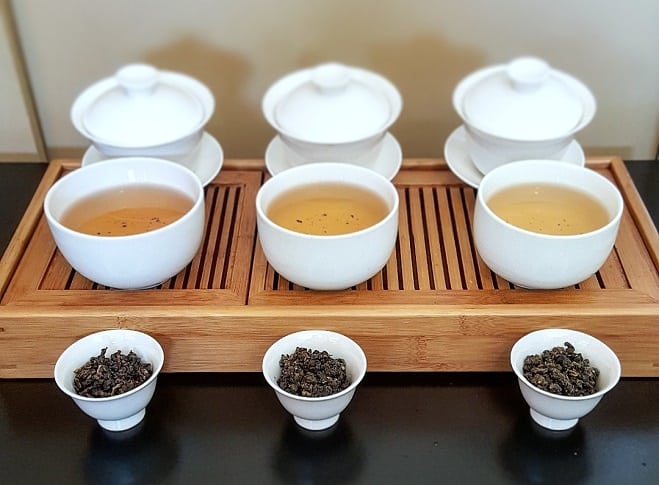
To buy the Muzha Tie Guan Yin, go HERE.
To buy the Li Shan Tie Guan Yin, go HERE.
Leave a Reply